Nuclear
Adriana Díaz Enciso
Up to some eight thousand years ago, Great Britain was still joined to that which would become an expression of its strangeness once it became an island: the continent. I find this incalculable figure in The World of Stonehenge, the exhibition at the British Museum, surrounded by an apt setting of twilight, birdsong, the distant rumour of water. The exhibition is not limited to the history, still full of gaps and mystery, of the famous stone circle in Salisbury plain—it links it in an organic way to other sites of prehistoric cult in different regions in Europe.
The calculation of dates like this abound—the sort that brings about vertigo in the face of time’s sovereignty and evidence of our existence’s insignificant dimension, but which are also a source or awe and wonder, and of a profound sense of human community which, no doubt, transcends our fleeting condition.
Nine thousand years ago, for instance, the taciturn megaliths hadn’t reached yet what we now know as Stonehenge: there were only the trunks of three trees, totems raised by some tribe of hunters-gatherers. The temptation to bring that image to mind is irresistible. In the exhibition’s displays we see stones, pieces of flint, innumerable axes from around 4300 BC, when the hunting and gathering culture gave way to farming. We also see an idol found in Glastonbury, from around 2500 BC, with big breasts and phallus, which, we are told, is the first human representation in Great Britain, and from these objects as starting point we try to imagine the landscape that would come to be occupied by the monument, in that inconceivably remote past, not surrounded by a tarmac path and the motorway as it is now, but by an expansion of quiet that we will never be able to know, visited by wild animals (including the extinct aurochs) rather than the New Age devotees that gather in crowds during the summer solstice in our dislocated times. Other things we don’t need to imagine: we see, with incredulity and a wonder that moves us to tears, an elm leaf that fell from a lost tree that no one will ever see again six thousand years ago.
We’re not told what the story of that leaf is; how it was found, or its age classified, what process has been required for its conservation. Perhaps it is better not to know. Looking at it is enough: its perfection, its fragility, its resilience, in absolute ignorance of time, and of our gaze.
Around Stonehenge have been found the remains of hundreds of people of whom we know nothing and who never imagined us. The over eighty sarsen stones which originally made up the circle, carried there around 2500 BC with superhuman effort through vast distances, and erected who knows how, are, as we know, aligned not only to mark the summer and winter solstices, but also the Metonic cycle of 19 years in which the sun and the moon return to the same place on the same date, and can predict eclipses. I remember a sunset there one September, several years ago, while the full moon rose at my back—a silent spectacle that went beyond any concept of beauty. You don’t need anything else to access the experience of the sacred.
Less dramatic, but equally eloquent, are the remains in the British Museum’s rooms of ritual feasts that took place many thousands of years ago, celebrated by human beings that have disappeared, but to whom we are bound by our gaze; the patterns with which these people decorated their objects or the huge stones inscribed with the signs of a celestial order that was understood through their eyes, intuition, body. We see chalk sculptures raised by children’s tombs, or some magnificent stone spheres carved with abstract designs, hailing from Scotland, perhaps the oracle of also disappeared gods, close to the recreation of Seahenge: a place we might think invented but which was real, built up with inverted tree trunks, the roots spread up into the sky, by the coasts of Norfolk.
Stonehenge’s circle was concluded some 4,500 years ago. Let’s think about that. Its presence calls us, whilst it is evidence of something irrecuperable. The landscape around it has changed for millennia, through human intervention and the action of time. If time is the condition of the irrecuperable, it is also the mirror that shows us that reality endures, in constant transformation.
It suffices to look at these ritual objects, and then see around us the hordes in the museum, stirred by that manic lack of interest of the tourist, with their selfies, or the objects being sold in the shops outside, the innumerable trinkets, to realize that things have been really screwed down the road. And yet, though mystery makes ancestors so wise in our eyes, surely banality has always existed in the human soul, even if we don’t know in what concrete form it was made once manifest.
However, this is not a review of the magnificent Stonehenge exhibition at the British Museum, but rather words born out of a reflection about time and its vestiges, about the world, everything created, and about the destruction of creation, which also occurs in time.
Up to now, 2022 has been a spectacular year in the United Kingdom. Not, it goes without saying, in politics or its economy, something I’ll touch upon at another moment, but in its weather (just before it became infernal during the July heatwave, I mean) and its light: that radiant light that has blessed us almost uninterruptedly since January, and the indescribable beauty of spring and summer so far. Life and nature following their course, without asking for anybody’s opinion, without lamenting about the way we humans do everything we can to destroy them.
During the most luminous months of the year, with the earth tilting its head towards the sun, there is light from four in the morning till almost eleven in the evening, and the whole earth—trees, blossoms, humans—come out to meet it suspended in a mesh of something that I can’t quite articulate, but which is sacred, even if sometimes we’re not aware of it. When I travel by train (one of my favourite pastimes), or on the trains and buses within London itself, I see trees, sky, clouds, and more trees; a luxuriant munificence which seems to want to take us back to the woods, to remind us of what we are. Often, my rapture has come accompanied by a reflection about certain threats that we hear over and over in the mouth of Russian spokespersons, politicians and the military.
The nature of the threat is nuclear. For some reason which, among the vomit of disjointed information about the war in Ukraine that overwhelms us all, escapes me, though from the beginning of the Russian invasion Putin’s government has shouted from the rooftops that the whole of the West and the NATO countries are their enemy, the threats of nuclear extinction are often directed specifically to the UK: a submarine missile, for instance, that would come down the Irish coasts, unannounced, without even a bomb alert, and which would turn us into a sterile wasteland in ten, twenty minutes. Of late they’ve said they might spare Scotland or Ireland after all but could definitely obliterate England, as if the devastation would respect borders. They tell us that the UK is not taking this talk seriously; that we think they wouldn’t dare to; that we’re playing with fire; that, what’s more, they can make us disappear in less than four minutes, and from the whole of the UK there would be absolutely nothing and no one left standing.
Let’s leave aside for a moment the absurd in such bragging; the certainty, which is already commonplace, that no one would be victorious after such an attack; or that we’re so relatively close to Russia that they would be victims themselves, since the radiations would reach them sooner or later. Let’s forget all that for a minute. Let’s think about the threat itself. Its dimension is so absolute, so unimaginable that sometimes, when I think about it, looking out of the window the landscape of sheer greenery that I love so much, I almost laugh. What kind of response is possible in the face of such nonsense?
I suppose that the Stonehenge stones, which have withstood so much and that were taken to Salisbury plain with such effort wouldn’t be standing either. Or would the stones remain, but no living being, nor any human consciousness to ever be amazed again by the ingenuity, strength and accurateness in astronomic calculations of those who took them there? Goodbye to the traces of those who preceded us thousands and thousands of years ago. Goodbye British Museum, with all its treasures, just- or ill-gotten! Goodbye to all the trees, the hills, the rivers; to the entire heritage of these islands’ culture, and to its birds. Goodbye to its flowers, including the wild, splendid hollyhocks. Goodbye everybody, friends and foes, men and women and everything that may be in between, from wherever they may hail, of any faith or none, of any race, young, elderly, children. Goodbye to collective memory. Goodbye to artists, authors, scientists, medical staff; goodbye to builders, bureaucrats, and the tourists that irritate me so. Goodbye to my life, its signs, my memory. Goodbye to hares, deer, foxes. Goodbye to the innumerable parks and gardens, the prodigious cathedrals, the vestiges of centuries in ancient buildings, and skyscrapers. Goodbye seagulls. Goodbye cafés, cinemas, pubs and hospitals. Goodbye, now for good, to the royal family, and 10 Downing Street in London, with its police, journalists, tourists and protesters at the gates. Goodbye red double-deckers. Goodbye to the melancholic coasts and their pebble beaches. To the sublime and the vulgar. To the landscape portrayed in countless books, pictures, films, and goodbye to the actual books, pictures (goodbye Turner!) and the gadgets that project the films. Ashes, the whole lot, as much as the audience. Goodbye to everything, without warning, without time to run, to say farewell, time for a last prayer or some gesture of soul or consciousness that might come close to it.
Goodbye to the leaf, preserved by miracle, that fell off an elm six thousand years ago.
And goodbye, I insist, to this bountiful nature, each and every single tree and flower.
Putin and his henchmen, emboldened by their orgy of blood and death in Ukraine, livid because things didn’t go as they planned, think that it is in their power to unleash this supreme destruction, and they amuse themselves suggesting to our imagination the infernal scenes. Their delirium is the conjuring up of the inconceivable.
Still shaken by the collective trauma of the pandemic, with frayed nerves because of the ever shriller evidence of global warming (in the above-mentioned heatwave that’s stifled Europe this summer, London reached 40 degrees for the first time in its history, and wildfires spread everywhere), the world does imagine, and its reaction is everything but wise: crazed nations invest more in nuclear weapons, as if the vertigo of a vision of hell couldn’t give rise to anything other than the most imbecilic and absolute self-destruction.
Why, if this threat is a thousand times worse than the Covid-19 pandemic, even though vertigo does pull at me, and even though I’m of course afraid, I don’t feel the same paralysing terror? I think it is because of its very inconceivability. Because the threat of absolute hell is, ultimately, absurd. If, as these sinister clowns pretend, there is really nothing we could do, if there would be no possible defence nor warning or alert, then the answer is clear: we have to live. Now. Just to live.
Through the train or bus window, through my home’s windows, I look out into the world, and I’ve never found it more beautiful. If it’s all going to end now, or not; if it is ever ending and ever renewing, as it’s finally the truth of this earth that has been turning for billions of years; if we know that even this sun that sheds light on us will be one day extinguished, we still have a form of resistance: to look at the world with reverence. To find our joy there, and to surrender our fear, our sorrow—infinite too—to time’s course, just as others yielded, in a silent stone circle, their adoration to a higher fire.
-Imagen de Michael Sutton
 Adriana Díaz-Enciso es poeta, narradora y traductora. Ha publicado las novelas La sed, Puente del cielo, Odio y Ciudad doliente de Dios, inspirada en los Poemas proféticos de William Blake; los libros de relatos Cuentos de fantasmas y otras mentiras y Con tu corazón y otros cuentos, y seis libros de poesía. Su más reciente publicación, Flint (una elegía y diario de sueños, escrita en inglés) puede encontrarse aquí.
Adriana Díaz-Enciso es poeta, narradora y traductora. Ha publicado las novelas La sed, Puente del cielo, Odio y Ciudad doliente de Dios, inspirada en los Poemas proféticos de William Blake; los libros de relatos Cuentos de fantasmas y otras mentiras y Con tu corazón y otros cuentos, y seis libros de poesía. Su más reciente publicación, Flint (una elegía y diario de sueños, escrita en inglés) puede encontrarse aquí.
©Literal Publishing. Queda prohibida la reproducción total o parcial de esta publicación. Toda forma de utilización no autorizada será perseguida con lo establecido en la ley federal del derecho de autor.
Las opiniones expresadas por nuestros colaboradores y columnistas son responsabilidad de sus autores y no reflejan necesariamente los puntos de vista de esta revista ni de sus editores, aunque sí refrendamos y respaldamos su derecho a expresarlas en toda su pluralidad. / Our contributors and columnists are solely responsible for the opinions expressed here, which do not necessarily reflect the point of view of this magazine or its editors. However, we do reaffirm and support their right to voice said opinions with full plurality.
Hasta hace alrededor de ocho mil años, la Gran Bretaña todavía estaba unida a aquello que se convertiría en expresión de su extrañeza una vez convertida en isla: el continente. Me entero de esta cifra incalculable en la exposición El mundo de Stonehenge, en el Museo Británico, con una oportuna ambientación de penumbra, canto de pájaros, el lejano rumor del agua. La exposición no se limita a la historia, todavía llena de huecos y misterio, del famoso círculo de piedra en la llanura de Salisbury, sino que lo liga de manera orgánica a otros sitios de culto prehistórico en diversas regiones de Europa.
Abundan los cálculos de fechas como el anterior, de esos que llenan de vértigo frente a la soberanía del tiempo y la constatación de la insignificante dimensión de nuestra existencia, pero que son también fuente de arrobo y de una sensación profunda de comunidad humana que, sin duda, trasciende nuestra condición efímera.
Hace nueve mil años, por ejemplo, los taciturnos megalitos todavía no llegaban a lo que ahora conocemos como Stonehenge: había solamente los troncos de tres árboles, especie de tótems erigidos por alguna tribu de cazadores-recolectores. La tentación de traer esa imagen a la mente es irresistible. En las vitrinas de la exhibición vemos piedras, trozos de pedernal, hachas innumerables de alrededor de 4300 a.C., cuando la cultura de caza y recolección fue dando paso a la agricultura. Vemos también a un ídolo encontrado en Glastonbury, de alrededor de 2500 a.C., con grandes pechos y falo, que, se nos dice, es la primera representación humana conocida en Gran Bretaña, y a partir de estos objetos intentamos imaginar el paisaje que luego ocuparía el monumento en ese pasado de inconcebible lejanía, no rodeado por un camino de asfalto y la carretera como ahora, sino una expansión de quietud que nosotros no podremos conocer nunca, frecuentada por animales salvajes (incluyendo al uro extinto) en lugar de los feligreses New Age que se congregan en multitudes durante el solsticio de verano en estos tiempos dislocados. Otras cosas no hace falta imaginarlas: vemos, con incredulidad y con un arrobamiento que mueve a las lágrimas, una hoja de olmo que cayó de un árbol perdido, que nadie volverá a ver jamás, hace seis mil años.
No se nos dice cuál es la historia de esa hoja; cómo fue encontrada, su edad clasificada, qué proceso ha requerido su conservación. Quizá es mejor no saber. Basta con mirarla: su perfección, su fragilidad, su resistencia, en ignorancia absoluta del tiempo y de nuestra mirada.
Alrededor de Stonehenge se han encontrado restos incinerados de centenares de personas de quienes nada sabemos y que nunca nos imaginaron. Las más de ochenta piedras sarsen que originalmente conformaban el círculo, llevadas ahí alrededor de 2500 a.C. con un esfuerzo sobrehumano a través de largas distancias, y erigidas quién sabe cómo, están, como sabemos, alineadas para marcar no sólo los solsticios de verano y de invierno, sino también el ciclo metónico de 19 años en que el sol y la luna regresan al mismo sitio en la misma fecha, y para la predicción de eclipses. Yo recuerdo una puesta de sol ahí un septiembre, hace varios años, mientras a mi espalda se alzaba la luna llena – un silencioso espectáculo que rebasaba cualquier concepto de belleza y que me hizo soltar el llanto. No se necesita más para acceder a la experiencia de lo sagrado.
Menos dramáticos, pero igualmente elocuentes, son los restos en las salas del Museo Británico de festines rituales que tuvieron lugar hace miles y miles de años, celebrados por seres humanos desaparecidos a los que nos conecta la mirada; los diseños con que decoraron sus objetos o las piedras enormes inscritas con los signos de un orden celeste que era comprendido con la mirada, con la intuición, con el cuerpo. Vemos esculturas de yeso erigidas junto a las tumbas de niños, o unas magníficas esferas de piedra talladas con diseños abstractos provenientes de Escocia, quizá oráculos de dioses también desaparecidos, cerca de la recreación de Seahenge: un lugar que parecería inventado pero que fue real, construido con troncos invertidos de árboles, las raíces extendidas al cielo, junto al mar de Norfolk.
El círculo de Stonehenge fue concluido hace alrededor de 4,500 años. Pensemos en eso. Su presencia nos llama y es a la vez evidencia de algo irrecuperable. A su alrededor el paisaje ha cambiado durante milenios, por intervención humana y del tiempo. Si el tiempo es la condición de lo irrecuperable, es también el espejo que nos muestra que la realidad perdura, en constante transformación.
Basta ver estos objetos rituales, y luego ver a nuestro alrededor a las hordas en el museo, animadas por ese desinterés maniaco del turista, con sus selfies, o los objetos que se venden en las tiendas afuera, las innumerables fruslerías, para darnos cuenta de que, en el camino, las cosas se han jodido de verdad. Y sin embargo, aunque el misterio vuelve tan sabios a los antepasados ante nuestros ojos, seguramente siempre ha existido la banalidad en el alma humana, aunque no sepamos en qué forma concreta se manifestaba entonces.
Pero esto no es una reseña de la magnífica exposición sobre Stonehenge en el Museo Británico, sino palabras que nacen de una reflexión sobre el tiempo y sus huellas, sobre el mundo, la creación entera, y sobre la destrucción de lo creado, que también ocurre en el tiempo.
Hasta lo que va del año, 2022 ha sido espectacular en el Reino Unido. No en la política ni en la economía, sobra decirlo (tema del que hablaré en próxima entrega), sino en el clima —hasta antes de que la ola de calor de julio lo volviera infernal— y la luz: esa luz radiante que nos ha bendecido casi ininterrumpidamente desde enero, y la belleza indecible de la primavera y lo que va del verano. La vida y la naturaleza siguiendo su curso, sin preguntarle su opinión a nadie, sin lamentarse por la manera en que los humanos hacemos todo lo que podemos por destruirlas.
En los meses más radiantes del año, con la tierra que inclina la cabeza hacia el sol, hay luz desde las cuatro de la mañana hasta casi las once de la noche, y la tierra toda, los árboles, las flores, los humanos, salimos a su encuentro suspendidos en una red de algo que no logro articular pero es sagrado, aunque a veces no nos demos cuenta. Cuando viajo en tren (uno de mis pasatiempos favoritos), o en los trenes y autobuses dentro del mismo Londres, veo árboles, cielo, nubes, y más árboles; una munificencia frondosa que parecería querer devolvernos al bosque, recordarnos lo que somos. A menudo, mi arrobo ha venido acompañado de una reflexión sobre ciertas amenazas que oímos una y otra vez en boca de portavoces, militares y políticos rusos.
La índole de la amenaza es nuclear. Por algún motivo que, entre el vómito de información desarticulada sobre la guerra en Ucrania que nos agobia a todos se me escapa, aunque desde el inicio de la invasión rusa el gobierno de Putin ha proclamado que todo Occidente y los países de la OTAN son su enemigo, las amenazas de extinción nuclear van a menudo dirigidas específicamente al Reino Unido: un mísil submarino que llegaría por las costas de Irlanda, por ejemplo, sin anunciar, sin una alarma de bombardeo siquiera, y que nos convertiría en un páramo estéril en diez, veinte minutos. Últimamente dicen que quizá salvarían a Escocia o Irlanda, después de todo, pero que podrían definitivamente aniquilar a Inglaterra, como si la devastación fuera a respetar fronteras. Nos dicen que el Reino Unido no se está tomando estas palabras en serio; que creemos que no son capaces; que estamos jugando con fuego; que es más: nos pueden desaparecer en menos de cuatro minutos, y de todo el Reino Unido no quedará absolutamente nada ni nadie en pie.
Dejemos de lado por un momento el absurdo de semejantes bravuconadas; la certeza, que es ya lugar común, de que nadie saldría victorioso tras un ataque de esta naturaleza; o de que estamos tan relativamente cerca de Rusia que ellos mismos serían víctimas del mismo, pues las radiaciones los alcanzarían. Olvidémonos de eso un minuto. Pensemos en la amenaza en sí. Su dimensión es tan absoluta, tan inimaginable, que a veces, pensando en ella, viendo por la ventana el paisaje de puro verdor que tanto amo en esta isla, casi me da risa. ¿Qué respuesta es posible ante semejante despropósito?
Supongo que tampoco las piedras de Stonehenge, que tanto han resistido y que tanto esfuerzo costó llevar a la planicie de Salisbury, seguirían en pie. ¿O quedarían las piedras, pero ningún ser vivo, ni conciencia humana que se admire nunca más del ingenio, fuerza y exactitud en el cálculo astronómico de quienes las llevaron ahí? Adiós a las huellas de quienes nos precedieron miles y miles de años atrás. ¡Adiós al Museo Británico, con todos sus tesoros, bien o mal habidos! Adiós a todos los árboles, las colinas, los ríos; al acervo entero de la cultura de estas islas, y a los pájaros. Adiós a sus flores, incluyendo a las salvajes, gallardas malvarrosas. Adiós a todos, amigos y enemigos, hombres y mujeres y todo lo que se encuentre en medio, de toda o ninguna fe, de todo origen y raza, jóvenes, ancianos, niños. Adiós a la memoria colectiva. Adiós a artistas, escritores, científicos, personal médico, adiós a obreros, burócratas, y a los turistas que tanto me irritan. Adiós a mi vida, sus huellas, mi memoria. Adiós a liebres, ciervos, zorros. Adiós a los innumerables parques y jardines, las catedrales portentosas, los vestigios de siglos y siglos en antiguos edificios, y los rascacielos. Adiós a las gaviotas. Adiós a cafés, cines, pubs y hospitales. Adiós, ahora sí, a la familia real, y al número 10 de Downing Street en Londres, con sus policías, periodistas y manifestantes en la reja. Adiós a los autobuses rojos. Adiós a las costas melancólicas y sus playas de guijarros. A lo sublime y lo vulgar. Al paisaje retratado en incontables libros, cuadros, películas, y adiós a los ejemplares de libros, a los cuadros (¡adiós a Turner!) y a los aparatos que reproducen las películas. Todo cenizas, igual que los espectadores. Adiós a todo, sin aviso, sin tiempo de correr, de despedidas, de una última oración o de algún gesto del alma o la conciencia que se le aproxime.
Adiós a la hoja, preservada por milagro, que cayó de un olmo hace seis mil años.
Y adiós, insisto, a esta naturaleza pródiga en verdor, a todos y cada uno de sus árboles, sus flores.
Putin y sus secuaces, envalentonados por su orgía de sangre y muerte en Ucrania, desencajados porque no salieron las cosas como planeaban, creen que está en su poder provocar esta destrucción suprema, y se solazan en sugerir la infernal escena a nuestra imaginación. Su delirio es el conjuro de lo inconcebible.
Sacudido todavía por el trauma colectivo de la pandemia, con los nervios crispados por la cada vez más enfática evidencia del calentamiento global (en la oleada de calor arriba mencionada que ha agobiado a Europa este verano, Londres llega por primera vez en su historia a los 40 grados, y los incendios forestales se extienden por todas partes), el mundo logra imaginar, y su reacción es todo menos sensata: enloquecidas, las naciones invierten en más armamento nuclear, como si el vértigo de una visión del infierno no pudiera propiciar otra cosa que la autodestrucción más imbécil y absoluta.
¿Por qué, si esta amenaza es mil veces peor que la de la pandemia de Covid-19, aunque el vértigo tira de mí, y claro que tengo miedo, no siento el mismo terror paralizante? Es por lo inconcebible, creo. Porque la amenaza del infierno absoluto es, en última instancia, absurda. Si, como pretenden estos payasos siniestros, de verdad no podríamos hacer nada, si no habría defensa posible ni aviso ni alerta, entonces la respuesta es clara: hay que vivir. Ahora. Vivir, nomás.
Por la ventana del tren, del autobús, por las ventanas de mi casa, asomo al mundo, y nunca me ha parecido más hermoso. Si todo se va a acabar ya, o no; si se está acabando siempre y siempre renovando, como es finalmente la verdad de esta tierra que lleva dando vueltas billones de años; si sabemos que hasta este sol que nos alumbra se ha de extinguir, nos queda una forma de resistencia todavía: mirar con reverencia el mundo. Encontrar ahí nuestro gozo, y entregar nuestro miedo, nuestro dolor también infinito al cauce del tiempo, como entregaron otros en un silencioso círculo de piedra su adoración a un fuego más alto.
-Imagen de Michael Sutton
 Adriana Díaz-Enciso es poeta, narradora y traductora. Ha publicado las novelas La sed, Puente del cielo, Odio y Ciudad doliente de Dios, inspirada en los Poemas proféticos de William Blake; los libros de relatos Cuentos de fantasmas y otras mentiras y Con tu corazón y otros cuentos, y seis libros de poesía. Su más reciente publicación, Flint (una elegía y diario de sueños, escrita en inglés) puede encontrarse aquí.
Adriana Díaz-Enciso es poeta, narradora y traductora. Ha publicado las novelas La sed, Puente del cielo, Odio y Ciudad doliente de Dios, inspirada en los Poemas proféticos de William Blake; los libros de relatos Cuentos de fantasmas y otras mentiras y Con tu corazón y otros cuentos, y seis libros de poesía. Su más reciente publicación, Flint (una elegía y diario de sueños, escrita en inglés) puede encontrarse aquí.


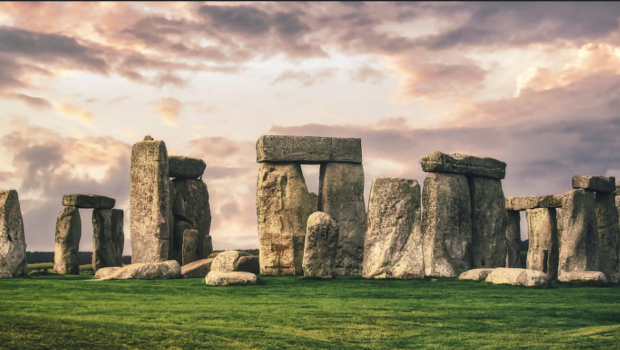

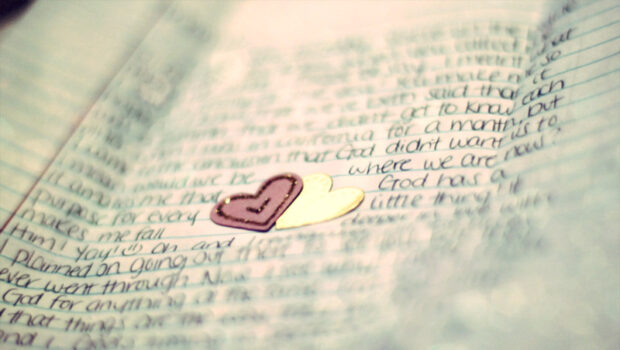
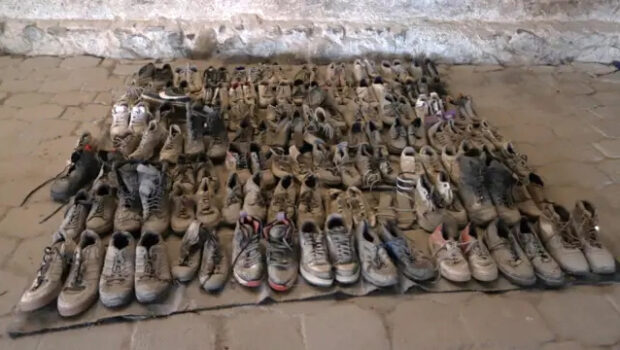
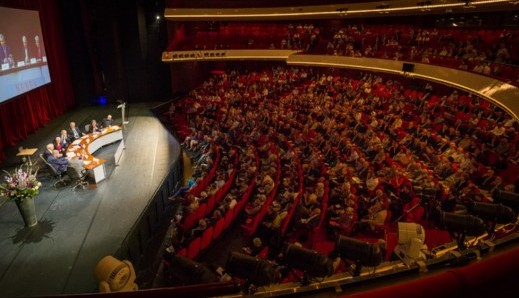

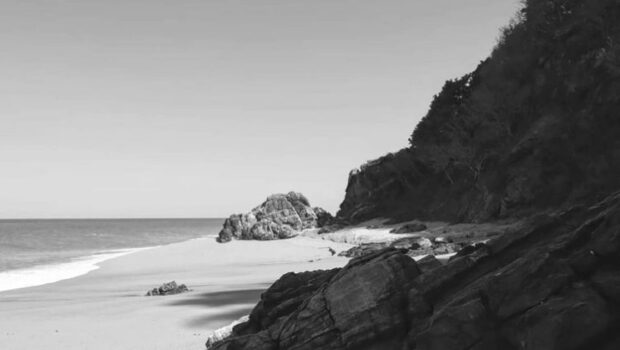
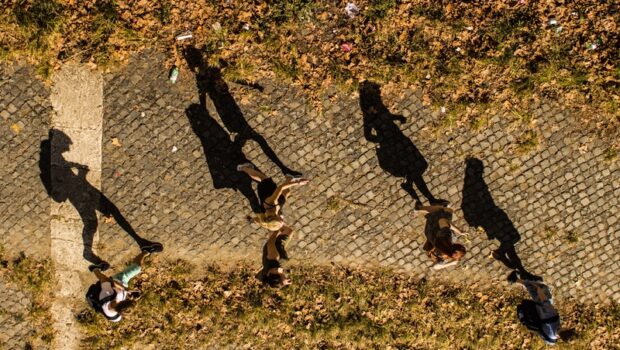

What an inspiring article!